Introduction
The First Home Savings Account (FHSA), launched in April 2023, is quickly becoming a go-to tool for Canadians saving for their first home. With over 300,000 accounts opened within its first year, the FHSA is proving to be a popular and effective way to accumulate savings for a down payment. However, with its relatively recent introduction, many Canadians remain unaware of its benefits and functionality.
This article explores the features of the FHSA, its tax advantages, contribution limits, and why it is a game-changer for first-time homebuyers.
How the FHSA Works
The FHSA combines the benefits of a Tax-Free Savings Account (TFSA) and a Registered Retirement Savings Plan (RRSP), making it an ideal savings vehicle for those planning to purchase their first home.
Here are its three primary tax benefits:
- Tax-Deductible Contributions: Contributions reduce your taxable income, similar to RRSPs. This deduction can lead to significant tax savings or refunds.
- Tax-Free Growth: Any interest, dividends, or capital gains earned within the FHSA are tax-free.
- Tax-Free Withdrawals: Funds withdrawn for the purchase of a qualifying first home are not subject to taxation.
Unlike the Home Buyers’ Plan (HBP), FHSA withdrawals do not need to be repaid, providing more financial flexibility for first-time homebuyers.
Who Can Open an FHSA?
To qualify, you must:
- Be a Canadian resident.
- Be aged between 18 and 71 (age of majority in some provinces is 19).
- Be a first-time homebuyer, defined as someone who:
- Has not lived in a home they owned (or jointly owned) within the current calendar year and the previous four years.
- Has not lived in a home owned by their spouse or common-law partner during the same period.
FHSA Contribution Limits
- Annual Contribution Limit: $8,000 per year.
- Lifetime Contribution Limit: $40,000.
If you don’t maximize your annual contribution, the unused portion carries forward to the next year. For instance, contributing $5,000 in the first year allows you to contribute up to $11,000 the following year.
Over-contributions incur a penalty tax of 1% per month until the excess is withdrawn or a new contribution room is available.
Investment Options in an FHSA
The FHSA allows for a variety of investment options, including:
- Mutual funds.
- Stocks and securities listed on designated stock exchanges.
- Guaranteed Investment Certificates (GICs).
- Canada Savings Bonds.
- Provincial Savings Bonds.
- Shares in small business corporations (subject to specific conditions).
A diversified investment strategy can help maximize the growth of your FHSA savings.
FHSA Withdrawal Rules
You can withdraw funds tax-free if they are used to purchase a qualifying first home. To make a withdrawal:
- Have a written agreement to purchase or build a home by October 1 of the following year.
- Submit Form R725 to your financial institution.
- Buy or build the home no more than 30 days before the withdrawal.
- Occupy the home as your principal residence within a year.
Withdrawals can be made in one lump sum or in multiple transactions.
Closing the FHSA
The FHSA must be closed if:
- It reaches its 15-year anniversary.
- The account holder turns 71.
- A withdrawal was made for a home purchase in the previous year.
If you don’t use the funds for a home, they can be transferred to an RRSP or RRIF tax-free, preserving their tax-advantaged status. Withdrawals for other purposes are considered taxable income.
FHSA vs. Home Buyers’ Plan (HBP)
The FHSA offers distinct advantages over the Home Buyers’ Plan (HBP):
- No repayment required: Unlike the HBP, FHSA withdrawals do not need to be repaid.
- Higher withdrawal limit: The FHSA allows tax-free withdrawals of up to $40,000 (or more with investment growth), whereas the HBP limits withdrawals to $35,000.
The two plans can be combined to maximize savings for a down payment.
Is the FHSA Right for You?
If you plan to purchase your first home within the next 15 years, the FHSA is an invaluable tool. Its tax advantages, flexibility, and potential for growth make it an ideal way to save for a down payment.
FAQs About FHSA
- What is the FHSA contribution limit?
$8,000 per year, with a lifetime limit of $40,000. - What happens if I don’t use the FHSA for a home?
You can transfer the funds to an RRSP or RRIF without tax consequences, or withdraw them as taxable income. - What is the FHSA 15-year rule?
You must close the FHSA 15 years after it was opened, or transfer the funds to another registered account. - Can I combine the FHSA with the Home Buyers’ Plan?
Yes, you can combine both to maximize your savings for a down payment.
Conclusion
The First Home Savings Account (FHSA) is a game-changing savings tool for Canadians looking to enter the housing market. With its combination of tax deductions, tax-free growth, and tax-free withdrawals, it significantly accelerates savings for a first home.
To maximize the benefits of your FHSA and integrate it seamlessly into your financial plan, consult a financial advisor. They can guide you on the best investment strategies and help you achieve your homeownership dreams faster.
This article is written for educational purposes.
Should you have any inquiries, please do not hesitate to contact us at (905) 836-8755, via email at info@taxpartners.ca, or by visiting our website at www.taxpartners.ca.
Tax Partners has been operational since 1981 and is recognized as one of the leading tax and accounting firms in North America. Contact us today for a FREE initial consultation appointment.
#lifeinsurance #irp #lifeinsurancetax #incometax #cralifeinsurance #shareholderbenefits #GreatwayFinancial #GreatwayIRP #ExperiorIRP #ExperiorLifeInsurance #WFGIRP #WFGIvari #InfiniteBanking #IRPBMO #JimPatterson #WaltDisney #TermInsurance #AccountantLifeInsurance #LifeInsuranceCRA #IndependentLifeInsuranceAdvisor #InsuranceAdvisor #FSRA #FSRAAudit #WholeLife #WholeLifeInsurance #InsuranceHelp #ProtectFamily #JamiePrickett #Marlon #MarlonAntonio #Recruiting


